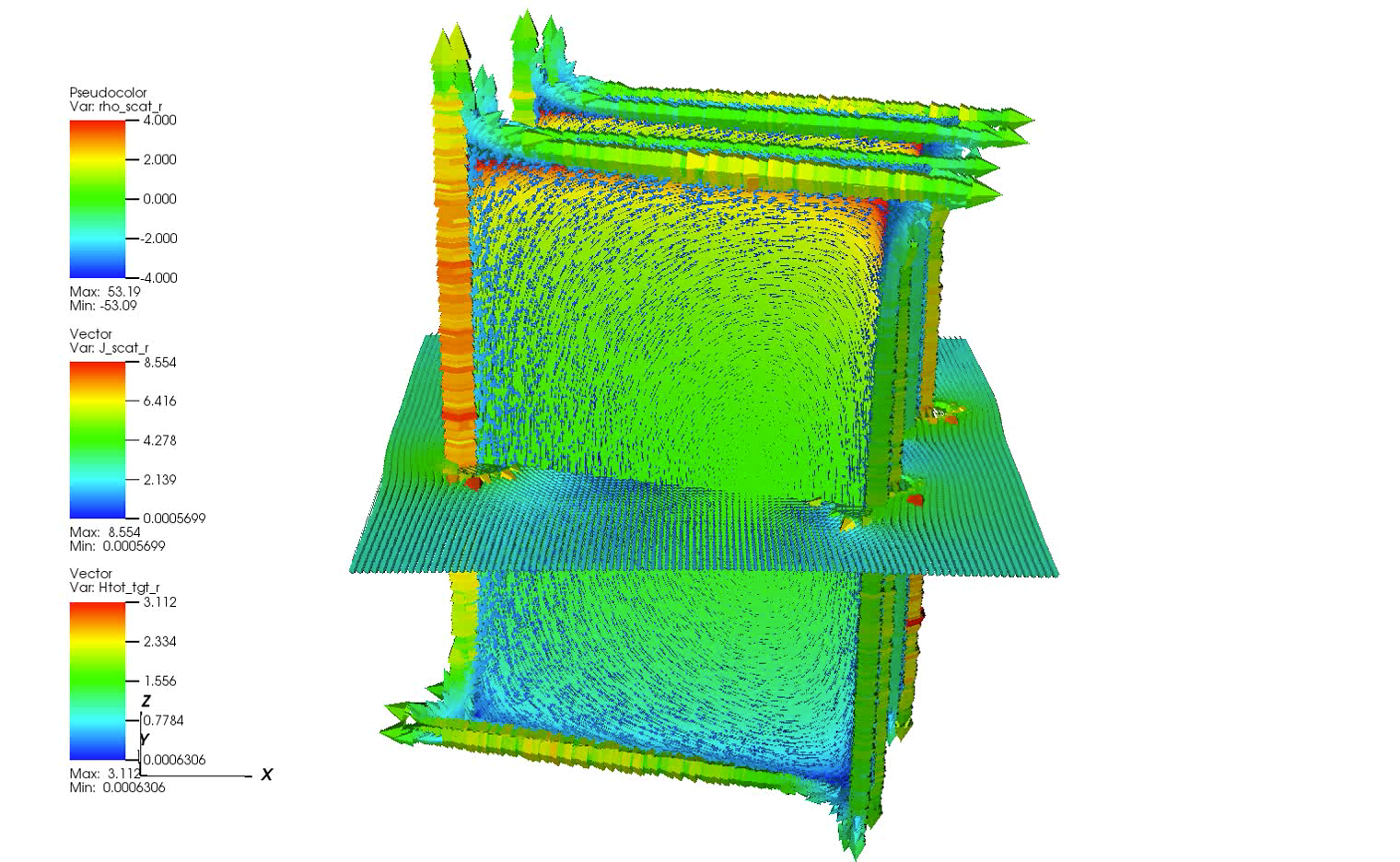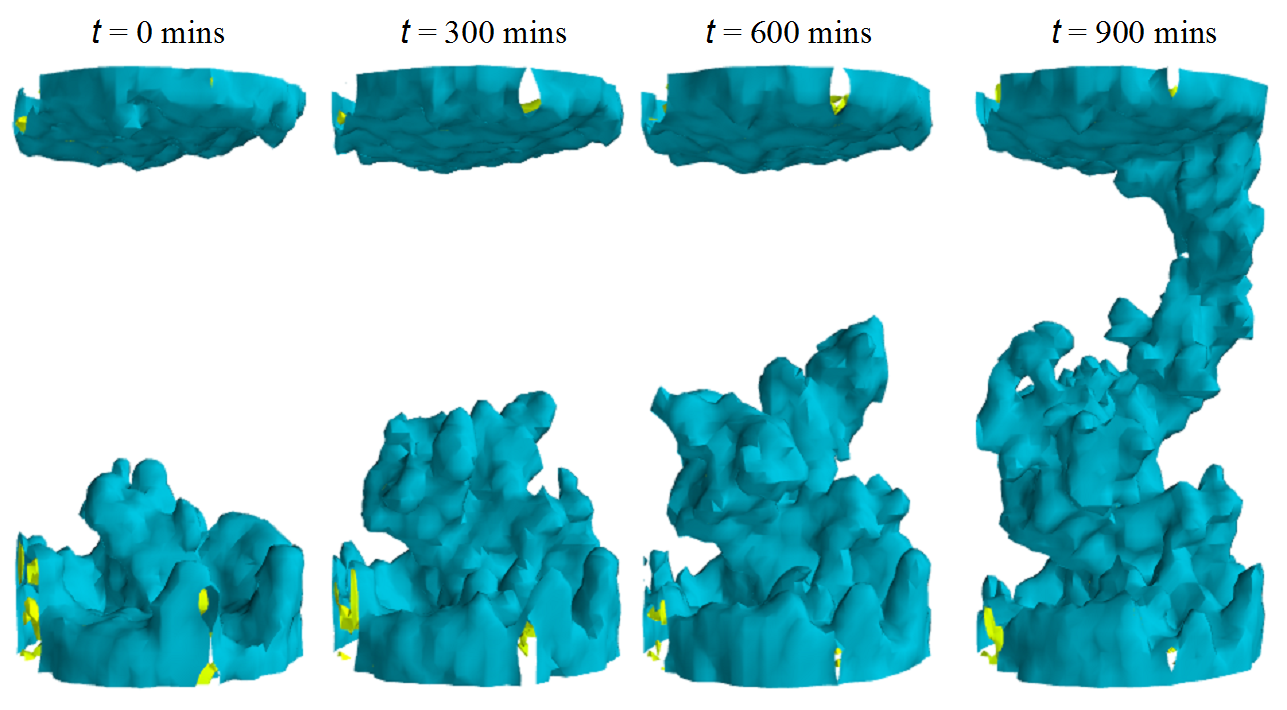Magnetic Resonance in Engineering - L-042
MRI of Batteries
- New York University, Chemistry Department, New York, United States
In the area of materials imaging, we have been working on techniques for NMR/MRI of batteries and battery materials, in particular Li-ion batteries and supercapacitors. The goal there is to analyze the proper functioning of electrical storage devices in situ during charging or discharging conditions by imaging changes in both the electrolyte and the electrodes. Particular challenges in working with conducting samples will be discussed here and recent in situ data on Li-ion batteries and supercapacitors will be shown.

Figure 1: RF field calculation
In situ NMR/MRI have proven to be a useful tool to probe the structure of Li-ion batteries (LIBs) during real-time charge and discharge. Ex situ studies of batteries are limited by self-relaxation of the electrode materials before a measurement can be obtained. The application of advanced magnetic resonance techniques, such as MRI and complex NMR experiments, in situ has the potential to monitor dynamics and visually monitor changes in functioning electrochemical systems in real time. The functionality of some energy storage devices where only the electrolyte is involved in the electrochemical process (such as supercapacitors) can only be studied in situ, as the electrolyte concentration gradients will relax as a potential is removed from the cell. Here we present techniques for in situ MRI of batteries and supercapacitors and discuss findings obtained from these studies [1,2]. It will be discussed how the rf field is perturbed by the presence of conducting materials in the probe [2], how susceptibility shifts can be used for assessing the morphology of microstructure buildup on electrodes [3], and how the location and amount of both cations and anions can be followed separately in a capacitor [4].
Lastly, the principle of reciprocity [5] will be discussed and how it relates to conducting regions. A somewhat surprising consequence of this effect is the appearance of additional rf phases which need to be taken into account to model the signals properly. While offering insights into reciprocity itself, the peculiar properties of metal nutation also present opportunities to probe distances significantly smaller than the typical skin depth ( ≈ 10 μm) because the form of the curve depends on the spatial distribution of a given nucleus at the surface of the bulk metal.

3D 1H MRI showing dendrite growth in a Li-ion battery.
1. S. Chandrashekar, N. M. Trease, H. J. Chang, L.-S. Du, C. P. Grey, A. Jerschow, Nat. Mater., 11, 311-315, 2012.
2. A. J. Ilott, S. Chandrashekar, A. Klöckner, H. J. Chang, N. M. Trease, C. P. Grey, L. Greengard, A. Jerschow, J. Magn. Reson. 2014, 245, 143-149.
3. H. J. Chang , N. M. Trease , A. J. Ilott , D. Zeng , L.-S. Du , A. Jerschow, C. P. Grey, J. Phys. Chem. C, 2015 in press
4. A. J. Ilott, N. M. Trease, C. P. Grey, A. Jerschow, Nat. Comm. 5, 2014, 4536.
5. D. I. Hoult, Conc. Magn. Reson. 2000, 12, 173-187.
